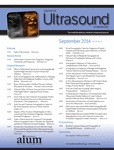
SHOULDER & ELBOW
Faster interscalene nerve block onset with injection inside brachial plexus sheath
This report has been verified
by one or more authors of the
original publication.
J Ultrasound Med. 2016 Feb;35(2):279-85
60 patients undergoing elective shoulder surgery and receiving an interscalene nerve block were randomized to an injection of 0.5% ropivacaine either directly inside the brachial plexus sheath, or outside the brachial plexus sheath. The study was conducted in order to determine which administration method yielded a faster nerve block and to assess the side effects of each injection technique. It was found that injecting the local anesthetic into the brachial plexus sheath resulted in a faster nerve block onset; however, it also resulted in an increased incidence of transient paresthesia while positioning the needle, as compared to injecting outside the sheath. All other outcomes were comparable between groups.
Unlock the full ACE Report
You have access to {0} free articles per month.Click below to unlock and view this {1}
Unlock NowCritical appraisals of the latest, high-impact randomized controlled trials and systematic reviews in orthopaedics
Access to OrthoEvidence podcast content, including collaborations with the Journal of Bone and Joint Surgery, interviews with internationally recognized surgeons, and roundtable discussions on orthopaedic news and topics
Subscription to The Pulse, a twice-weekly evidence-based newsletter designed to help you make better clinical decisions
Exclusive access to original content articles, including in-house systematic reviews, and articles on health research methods and hot orthopaedic topics
Or upgrade today and gain access to all OrthoEvidence content for just $1.99 per week.
Already have an account? Log in


Subscribe to "The Pulse"
Evidence-Based Orthopaedics direct to your inbox.
{0} of {1} free articles
Become an OrthoEvidence Premium Member. Expand your perspective with high-quality evidence.
Upgrade Now













































































